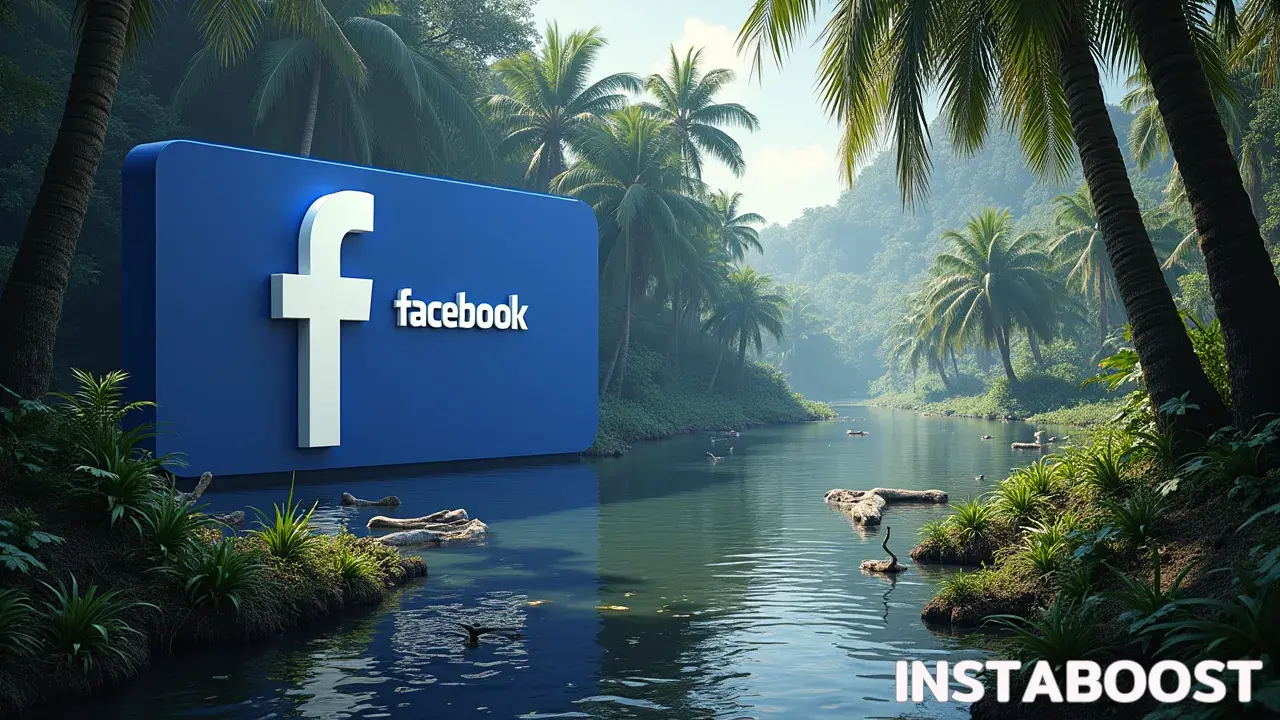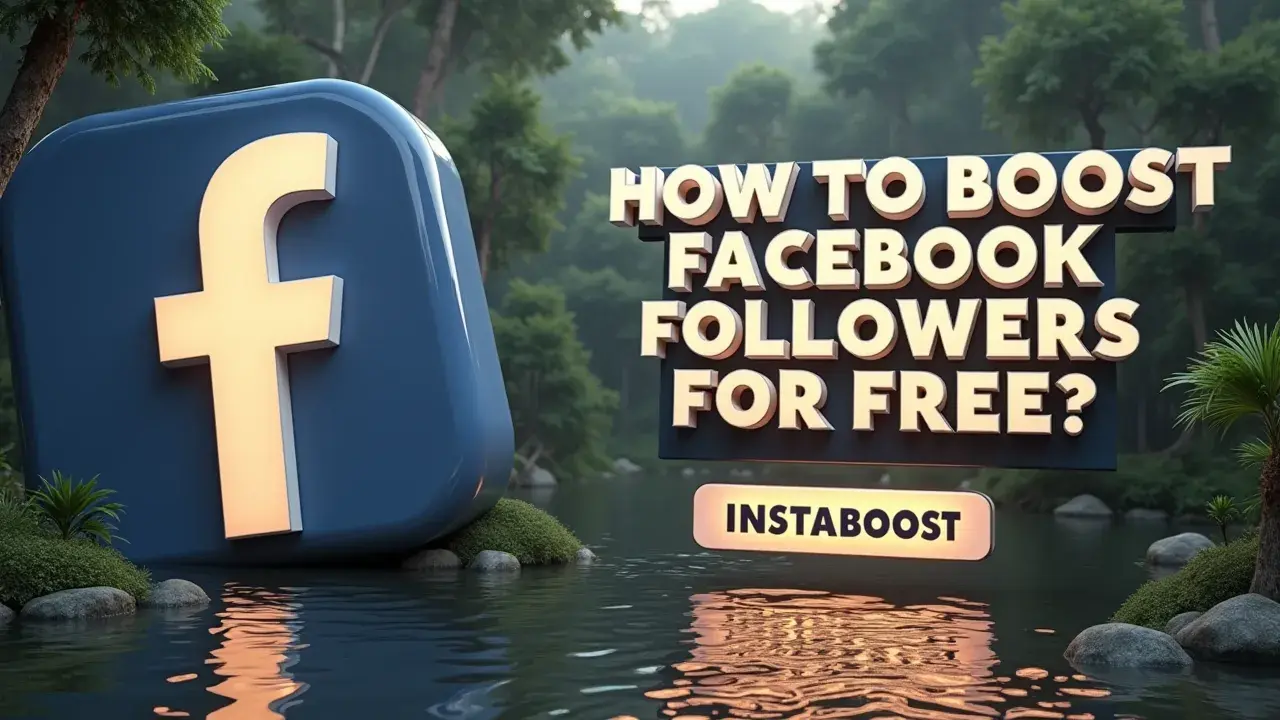How To Boost Facebook Followers for Free?
Growing Facebook followers without spend is achievable with consistent, useful actions. Content loops work when posts prompt shares and lead back to a profile that clearly signals value. Timing matters if posts align with audience activity, and replies that continue conversations can nudge visibility and trust. Small profile fixes compound results by clarifying focus and removing friction, making it easier for the right people to follow and stay engaged.
Stop Guessing: Treat Growth Like a System
Growing Facebook followers for free isn’t luck or “viral energy.” It’s a simple system you can run over and over. Start by getting specific about who you want and why they’d stick around. “People who like my niche” is too broad. “First-time home cooks who want 20-minute meals” gives you a clear filter for what to post and what to skip.
Then think in loops, not one-offs. What moves someone from a scroll to a profile visit, to a follow, and back to your posts through notifications or Groups? Make the top of each post easy to skim, pay it off by the end, and point somewhere useful. Pin a signature post that explains what you do. Write a bio that says exactly who you help and how. Keep one featured story or highlight that shows your value in 30 seconds – a quick recipe breakdown, a before/after, a simple checklist.
Consistency beats intensity. Two to four solid posts a week, timed for when your people are actually online (check Page Insights), will do more than a big burst and a long gap. Use formats that travel: carousels with one clear idea per card, native video with a fast hook and a clean takeaway, and simple lists people will save. Treat comments like a growth surface. Ask prompts that invite real answers people want to read – “What’s the one pan you reach for every night?” – then reply fast to keep the thread moving. Extend your reach without ads.
Show up in relevant Groups with useful answers, not pitches. Co-create posts with adjacent pages so both sides meet someone new: a meal-prep page teaming up with a budget grocery page, for example. Track leading signs: saves, shares, profile taps, and comments per reach. Follows trail behind those. If you can repeat what lifts those numbers, the follower count tends to follow on its own. Not a hack – more like a set of small, repeatable habits, good timing, and posts that earn their place in the feed, week after week, without a lot of noise and buy Facebook growth services quietly tempting you to skip the fundamentals.

Proof Over Promise: Why You Should Trust This System
I watched a “perfect” funnel stall because the opening line was off, and that’s when it clicked: follower growth on Facebook isn’t magic; it’s mechanics. I’ve used this same system with a neighborhood café, a couple of solo coaches, and a few niche creators. The results weren’t flashy; they were steady. We picked a clear audience, made the first line do real work, and set up loops that moved people from scrolling to engaging. One café went from a shaky 1% engagement to a consistent 6 – 8% by posting before-and-after reels at 11 a.m., replying within 10 minutes, and pinning a “starter pack” post that was worth following.
A solo creator added 1,000 followers in 30 days without ads by committing to three formats that travel: tight carousels, native group Q&As, and short list reels tied to a weekly theme; you’ll hear people debate organic consistency versus tools like affordable Facebook followers to buy, but the thread through all of it is the same: measure the next action and cut the rest. If a post didn’t earn saves, we fixed the lead. If watch time dropped at second five, we changed the first sentence instead of scrapping the idea. This is how you grow Facebook followers for free: treat it like a system, not a stunt.
Look for small, compounding gains instead of chasing virality. Use signals you control – fast replies, a reliable cadence, native features – to nudge the algorithm. And hold one standard: every asset should make the next step obvious. I’m not promising rocket-ship graphs; I’m offering a playbook that holds up when the platform shifts and still rewards focused work. That’s something you can check for yourself, not take on faith.
Frameworks, Not Funnels: Build Loops That Compound
I stopped building funnels and started building frameworks, because a funnel assumes a straight line while Facebook growth behaves more like a loop. When you set up a few tight loops, you can grow followers without guessing. Loop 1 is Hook-to-Save: the first line has to carry the weight. Call out a real problem and promise a clear finish in plain words – “20-minute dinners that don’t taste rushed” is the kind of thing people recognize. Pair it with a format people actually save: a one-screen checklist, a mini recipe card, or a step-by-step carousel. Saves tell the algorithm the post is useful and help it resurface.
Loop 2 is Comment-to-DM: ask people to drop a specific word in the comments – “Comment ‘prep’ for the grocery list” – auto-reply with the resource, and add a light follow nudge. That turns a passive view into a two-way interaction, and those contacts tend to see more of your next post. Loop 3 is Group-to-Profile: run a small ritual in a Facebook Group – weekly Q&A, a five-day micro challenge – then share a simple recap on your Page with a clear invite to join. Group activity builds identity and gives your Page real social proof to point to. Keep the cadence simple: two save-worthy posts a week, one comment trigger a week, one group ritual a month.
Track three numbers: hook open rate (3-second views), save rate, and comment-to-DM conversion. If the hook’s weak, rewrite the first line. If saves are low, compress the steps. If DMs stall, tighten the ask. It’s mechanics, not magic – small tweaks that stack up over time and make the whole thing work a little better each week, then a little better after that and get more likes by buying.
Stop Blaming the Algorithm: Fix the Parts You Control
I thought this would work. It didn’t. The slump wasn’t a phase; it was feedback. If you’re trying to grow Facebook followers for free and your numbers are stuck, set aside the comforting myths. It’s rarely “bad timing.” It’s the first line not earning attention. “Shadowban” is an easy story; inconsistent signals to the ranking system are harder to admit.
If your Hook-to-Save loop isn’t working – first line sparks curiosity, people hit See More, then save or share – the rest won’t carry you. Same with the Comment-to-Reply loop: if your prompt leads to one-word answers, the thread ends there. Treat each post like a small experiment. Before you hit publish, decide what outcome matters: save rate, comments per view, or shares per reach. After 24 hours, look at the numbers, not how you feel about them. If saves are low, rewrite the opener so it makes a clear promise the carousel actually delivers.
If comments are thin, use prompts that ask for trade-offs or reasoning (“Which one would you cut and why?”) instead of votes. And don’t post at random. Pick three formats that travel – a checklist carousel, a contrarian one-liner with a screenshot that backs it up, and a short before-and-after reel – and rotate them on the days your audience usually shows up. The algorithm isn’t judging you; it’s reflecting what you put in. Groups, collabs, and cross-posts can help, but they only amplify what already works; if anything, they just make the signal louder, the way you might buy Facebook views for instant exposure and still see the same patterns. Push against luck and lean into mechanics: a clear audience, an opener that earns the click, loops that reward small actions. Do that, and growth starts to feel less like a mystery and more like something you can work with.
Close the Loop: Decide, Document, and Do the Boring Things Right
Maybe all this did was give you a clearer question: what will you do every week, without fail, to keep the loops running? The quickest way to grow Facebook followers without paying is to stop improvising and start operating. Pick your non-negotiables: one Hook-to-Save post, one native video with a strong first three seconds, one cross-post into a relevant Group, one co-sign with a peer creator, and one focused comment sprint on high-signal posts in your niche. Put them on a recurring calendar. Track the same four numbers every time: hook retention at three seconds, saves, shares, and new follows per post.
Run the same test for two weeks before changing anything. When a post overperforms, turn it into a repeatable format. When one underperforms, start with what you controlled – title, preview text, opening frame – before you blame timing or the feed. Capture simple one-page “plays” as you learn: the exact opener that drove saves, the thumbnail that lifted watch time, the Group where your explainers actually travel, and the small patterns that help you grow your Facebook audience with shares without changing your core voice. This is search thinking applied to social: consistency teaches the system who you are, and clarity helps people decide why to follow.
You’ll want to add more tactics; wait until one loop is stable. Then scale what’s working: batch hooks, template your visuals, schedule collabs, and set reminders to resurface proven posts after 21 – 30 days. Growth isn’t magic; it’s maintenance. Keep the loops tight and the signals steady, and the algorithm acts more like an amplifier than a gatekeeper. Now write next week’s five moves and the exact metrics you’ll accept as proof you’re on track, even if it feels a bit plain on the page, even if it’s boring to look at twice in a row… and keep shipping.
Start With a System, Not a Streak
If you want to grow Facebook followers without spending money, trade streaks for a simple loop you can run on repeat. Growth isn’t magic; it’s a string of small signals that add up: a first line that earns the tap, three seconds that hold attention, a save that tells the system to resurface the post, a comment that nudges more replies. The algorithm tends to reward clear value delivered consistently, and small behavior cues like varied reactions can help the flywheel spin as much as comments and saves get more emoji reactions on Facebook without changing your voice.
Build a weekly rhythm you can keep when life gets busy: one hook-first post aimed at saves, one native video with a tight cold open, one cross-post into a relevant Group, one co-created piece with someone whose audience overlaps yours, and one focused comment sprint on high-signal posts in your lane. It’s not flashy, but it compounds. Treat every move like a test. Track hook retention, save rate, one-hour comment velocity, and Group-to-Page clickthrough. If something lags, adjust what you control – the angle, the packaging, the opening shot – before blaming timing. Keep your surface area wide but coherent: post natively, reply quickly, pin what performs, and turn winners into quick carousels so late readers can catch up. Search matters more on Facebook now, too, so use clear intent terms in your titles like “how-to,” “checklist,” or “template” for a second path to steady growth. From there, it’s loops, formats, and cadence – turning follower growth from a slot machine into a small system you can run without thinking too hard about it.















